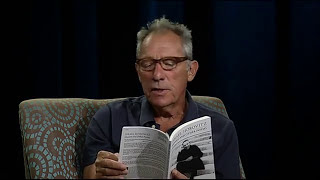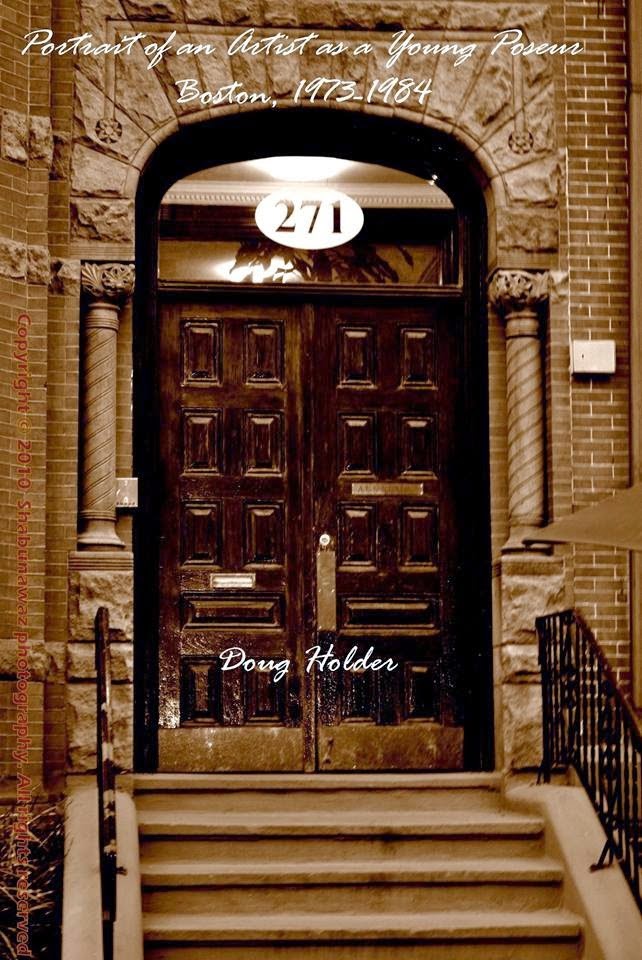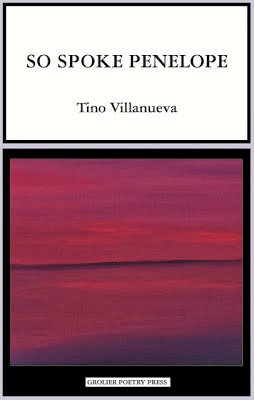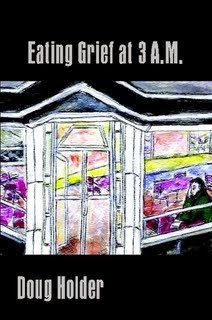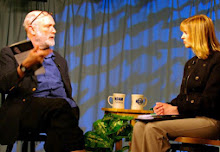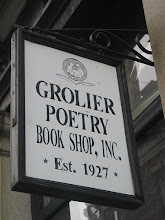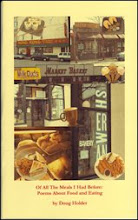.jpg)
Article byMichael Steffen
To dot our i’s and cross our t’s, technically Shakespeare would be measured as the greatest dramatist of the English language. He has been vaulted to posterity, and in no small way, largely due to his plays, which are written in verse, but so are the plays of the great precedent cultures. Aristophanes and Sophocles wrote their plays in verse, yet it is Homer who wears the laurels as the father poet of Greece. The same is true for Rome, with its popular literature from the playwrights Plautus and Terence (who exerted a great influence on Shakespeare’s drama), while Virgil with his Aeneid is the eternal city’s, and the early West’s, fountain from the myrtle shades of literary inspiration. Molière and Racine wrote high neoclassical drama in masterly Alexandrine verse, but the French, very particular themselves about classification, would never call either of them “poets.” Pierre de Ronsard of the High Renaissance monarchs Francis I and Henry II sits high on a pedestal as the voice of the Muses of recognizably modern French for educated francophones.
Even in Shakespeare’s day, as Peter Ackroyd notes in his biography, “[t]here was no question…of creating an eminent ‘career’ out of writing for the playhouses; these men were not established poets such as Samuel Daniel or Edmund Spenser, patronized by royalty and financed by nobility. They were journeymen or workmen. Whether Shakespeare considered himself in this light is an open question.”
Sure Shakespeare wrote an edificial sonnet sequence, from which a good deal of the language’s wisdom is quoted. Yet, great as that sequence is, promising eternity to his beloved (and making good on that promise), it would hardly constitute the ecstatic and robust popularity Shakespeare holds to this day as The Bard, English of English terms for the culture’s preeminent master of verses. America, our country, I think is chronologically as Democratic as it is demographically. Though we continue to remember and somewhat revere father Walt and mother Emily, there really is no notion of a greatest American poet, not in the sense England has celebrated Shakespeare or Italy enshrined Dante.
Yet Shakespeare also wrote substantial narrative poems, not meant for the stage. Two of these works in particular, Venus and Adonis and The Rape of Lucrece, are noteworthy literary oeuvres, which were the first of the poet’s works to appear under his name in print in London and won him fame as England’s proud example of a contemporary (1590s) dolce stil nuovo poet to rival the famous poets of Italy. Even though, observes the Arden Shakespeare Introduction to Shakespeare’s Poems:
[h]is claim to the continued attention of posterity rests essentially on the four ‘great’ tragedies [in which he explored the mysteries of good and evil], Hamlet, Othello, King Lear and Macbeth…this is not how Shakespeare was seen by his contemporaries. His literary reputation was quickly established in the mid-1590s on the strength of the two long poems, currently the most neglected items in the Shakespeare canon…
Continuing with the Readers’ Poem segment of our series, The Hastings Room will be presenting one of these narrative poems, The Rape of Lucrece, upon the author’s 460th birthday, on Tuesday April 23rd. An abridged version of the poem will be read by Annie Pluto, David Gullette and (myself) Michael Steffen, in the Auditorium of the Somerville Public Library at
79 Highland Avenue. One of many opportunities granted by the reading will be to hear a notable concentration in this narrative poem written in rhyme royal, comparably to the dramatic verses we know so well from A Midnight Summer’s Dream, Macbeth, and the others.
“The poem,” writes Peter Ackroyd, “like his drama, begins in media res with a rushing speed and it maintains its dramatic momentum throughout…Shakespeare renders everything instinct with palpitating life. The Rape of Lucrece is extravagant in diction, elaborate in cadence, filled with paradoxes and oppositions, epithets and exclamations, conceits and images; it has a vaunting rhythm and an arresting rhyme-scheme. It is…a high-spirited performance in which Shakespeare displays all of his excitement and eloquence. Once more the pleasure of the reader [and listener] is equaled only by the pleasure of the writer.”
There’s a lot about Lucrece to open readers’ eyes today. The work gave William Butler Yeats his resonant epithet in “The Second Coming” for the impending tragedy felt in Europe in the late 1930s. It is telling that the term appears at the critical moment in Shakespeare’s poem as the sinister prince is on the brink of assaulting the defenseless woman:
While she, the picture of pure piety,
Like a white hind under the gripe’s sharp claws,
Pleads, in a wilderness where are no laws,
To the r o u g h b e a s t that knows no gentle right, 545
Nor aught obeys but his foul appetite
The passage, taken from a crescendo of tension at a singular moment, under the poet’s extensive sensibility, becomes a warning of great magnitude to the civilization of any age, that a “wilderness where are no laws” not only encompasses our human world but can and does often encroach upon the human mind and its conduct.
Lucrece was written in 1592-93, during a severe plague outbreak that closed down the London theatres, giving rise to a demand for sustained readerly verse. In contrast to the dramatic verse, the narrative verse is palpably inward and isolated, relating to the anxiety and loneliness still much with us in our Internet existence in the wake of the COVID quarantine year and on.
As with Venus and Adonis, the poet’s focal and elaborate interest in Lucrece is a feminine subject, one in high standing with society. She is both liberally educated and articulately moral, intellectually observant and analytical. Lucrece’s circumstance as victim will not allow her Hamlet’s complexity in the dilemma of avenger, yet more lines and more psychological attention are given to Lucrece than to any other character in Shakespeare’s canon. In this respect, as is the case with many of his plays, Shakespeare is wholly in step with the attention of England in the reign of Elizabeth I.
Who was Lucrece? Lucretia (died circa 510 BCE), anglicized as Lucrece, was a noblewoman of ancient Rome. Her rape by Sextus Tarquinius and her subsequent suicide incensed the Roman people to rebel against the tyranny of Tarquin’s father, Lucius Tarquinius Superbus, the last king of Rome. The Tarquins were expulsed from the city and the government transitioned from a monarchy to a republic.
The Roman historian Livy upheld Lucretia to Roman girls as an exemplar of beauty and purity—a virtuous combination, which would take on great significance for those conflictual qualities (the pride of beauty vs. the kindness and modesty associated with the faithful, symbolized by the clash of roses, blushing red vs. smiling white) extensively throughout Shakespeare’s writing.
The mytho-historical account that Ovid and later Shakespeare took up revolve on a woeful unmindfulness of the tongue, on the part of Lucretia’s husband, Lucius Collatinus, bragging that his wife’s chastity was impeccable and unassailable. In the company of this boast stood the king’s son Sextus Tarquinius, more than used to having his way in all things, who quietly took his friend’s boast as a challenge. Thus to a secondary yet very poignant degree, blame for the tragedy that unfolds stems back ironically to the victim’s husband Collatinus, with a finger pointing at the immodesty of his unlocked confidence in his wife.
But why tragedy at all? The world is full of it, from terminal cancers and local shootings to Haiti, Ukraine and Gaza. Ignorance for the sake of precious innocence will not satisfy our demand for honesty with the state of the world and our mortality. Aristotle knew this long ago when he perceived the cathartic nature of tragedy, to be presented with the darkness of the world, and within each of us, effecting pity and fear, in the simulated arena of art, waking our compassion for human failure (not denying our own) and for the suffering of others.
Ackroyd, moreover, has noted how “The Rape of Lucrece can be seen as a mine of gold for Shakespeare’s later dramas; he becomes fascinated by the idea of the unquiet conscience and by the murder of innocence. The poem may also be the forerunner of murders in bed, among them those of Duncan and Desdemona.” The Rape strikes at an archetypal moment, in other words, of an other-worldly annunciation. She is asleep in her bed when Tarquin’s hand alights on her breast:
His hand, as proud of such a dignity,
Smoking with pride, marched on to make his stand
On her bare breast, the heart of all her land…
She, much amazed, breaks ope her locked-up eyes,
Who, peeping forth this tumult to behold,
Are by his flaming torch dimmed and controlled.
Imagine her as one in dead of night
From forth dull sleep by dreadful fancy waking,
That thinks she hath beheld some ghastly sprite,
Whose grim aspect sets every joint a-shaking… (ll 437 – 452)
The poetry is spirited, rhythmic and melodious, while the act it portrays is atrocious (though it does “ope her locked-up eyes”). We know from Horace’s adage that art must somehow please (or fascinate) as it instructs. In a later passage in Lucrece, we find the desolate subject beguiling her grief and the time awaiting the return of her husband, viewing a painting of the fall of Troy. She expresses her awareness of this dual nature of tragic art, the beauty of the rendering vs. the horror of its subject:
Here feelingly she weeps TROY’s painted woes:
For sorrow, like a heavy-hanging bell,
Once set on ringing, with his own weight goes…
And chid the painter for his wondrous skill…
So fair a form lodged not a mind so ill. (ll 1492 – 1530)
Depending on your sense of history, what Lucrece’s politico-erotic fate represented to Shakespeare and his readers might reach for equivalents, to us in the early 21st century, at Maria Callas/Jacqueline Kennedy, Marilyn Monroe or Lady Diana. Again, depending on your sense of history. A female personage/character is liable to absorb any resemblance from our present-day social and political icons back to Eve. From the two long narrative poems, Shakespeare’s contemporaries could have readily identified the Venus/Lucrece dichotomy as echoes of the recent royal pretenders, Elizabeth the powerful and liberal and her sister Mary Queen of Scotts the contentious, victimized and tragic.
Still any modern comparison to the chaste Roman Lucretia would fail. We would have to stir in Mother Theresa for that. For though Renaissance history and culture is scant in sexually virgin models, the 1500s are not so far removed from the ecclesiastically dominant Medieval period, which was profoundly devoted to Our Lady, as to have lost all sense of respect for the dignity of chastity and fidelity. To us, at least without the bridge of Shakespeare, it’s an Atlantean feat to uphold purity and popularity.
The Introduction to The Arden Shakespeare’s Poems points out: The image of Lucrece could be viewed in sharply conflicting ways. Though apparently delivering a warning to wives to die rather than betray their husbands…it nevertheless showed a disheveled and bare-breasted woman whom less serious-minded young men might view as an erotic pin-up…The great South German painter Lucas Cranach (1472-1553) painted Lucretia’s suicide many times, sometimes showing her bare-breasted, but often wholly nude. It was one of Cranach’s nude versions that appears to have been most popular, surviving in at least fifteen versions or studio copies.
In the narrative of the poem, we also encounter conflicting views, ambiguities—at least, leading up to the rape. For Lucrece initially greets Tarquin very openly and amicably, as would be expected of hostess to guest:
When at Collatium this false lord arrived,
Well was he welcomed by the Roman dame,
Within whose face Beauty and Virtue strived…
Tarquin “makes excuses for his being there,” and talks to Lucrece of her husband’s deeds in battle and the fame he’s won, all to mask his true intent to “have” her; “seduce” never even enters the picture. That is, he has acknowledged her marriage. It’s odd that Shakespeare, so easily invited to elaborate upon opportunity, is satisfied to impart that Tarquin “makes excuses” without listing even one of those excuses for visiting the house of Collatine.
Amplification was a major trope in the Renaissance poet’s professional repertoire. Readers and listeners in the 16th century were evidently not impatient with verse. Indeed, with the theatres closed due to the Plague, poetry, already a major entertainment, would become even more important—as our televisions streaming movies had to reassert their privilege over cinemas during the COVID quarantine. Instead of being full and fast, time for people in the day of Shakespeare, and certainly when in quarantine, tended to be tedious and oppressive; “beguiling” its slow pace with story-telling was welcome, as was conversation, and listening to poetry.
Mirroring this appreciation of language, Tarquin is shown as a skilled conversationalist, precisely exercising and exhausting the spirit while passing the time:
… after supper long he questionèd
With modest Lucrece, and wore out the night.
Now leaden slumber with life’s strength doth fight,
And every one to rest himself betakes,
Save thieves and cares and troubled minds that wakes.
As one of which doth Tarquin lie revolving
The sundry dangers of his will’s obtaining…
That is, conversation appeases the socially engaging spirit. Because his intentions with Lucrece aim beyond mere talk, after retiring, Tarquin’s spirit is still restless, with the debate about carrying out his sexual conquest. With the poet’s insight into human nature, the poem’s elaborations hold our interest in their pertinence, continuing to unfold Tarquin’s specific lust to a general defect of greed.
Here’s another theme so relevant to our time, as it must have been to Shakespeare’s in the growing personal fortunes of the Renaissance era; remembering his subject is the behavior of the cream of society 2000 years in Shakespeare’s past, around 500 BCE. Not only is the poem’s antagonist overstepping social norms, he is putting into question his own limits of satisfaction, not just sexually but in all manner of possessing, and his own sense of owning up to what he attains, of being genuine:
Despair to gain doth traffic oft for gaining…
Those that much covet are with gain so fond
That what they have not, that which they possess
They scatter and unloose it from their bond,
And so by hoping more they have but less,
Or gaining more, the profit of excess
Is but to surfeit, and such griefs sustain,
That they prove bankrupt in this poor rich gain. 140
… And this ambitious foul infirmity,
In having much, torments us with defect
Of that we have: so then we do neglect
The thing we have; and, all for want of wit,
Make something nothing by augmenting it.
The poet goes on, augmenting and lavishing as he criticizes copia, the aspired-to literary style of his day:
Such hazard now must doting Tarquin make,
Pawning his honour to obtain his lust;
And for himself himself he must forsake.
Then where is truth, if there be no self-trust?…
Self-esteem comes, not in having—possessing—but in justification through debate, in thorough consideration of the pros and cons of the critical moments. It was a habit of the mind for scholars and the educated in the Renaissance. As Ackroyd highlights in the biography,
The final stages of Shakespeare’s education were perhaps the formative ones. He moved from grammar to oratory…[being] trained, as part of this act of creation, to take both sides of any question. The ancient habit of the philosophers and rhetoricians was to argue in utramque partem—on either side of the argument. Any event or action can thus be viewed from a variety of different perspectives.
The observation is eye-opening in our time where partisan thinking and a deaf ear and blind eye to the other side’s points of view have become so prevalent, even, if not radically, from their academic sources. In The Rape of Lucrece, the poet’s ambidexterity with argument extends deeply into the thinking and mindset of his characters. And for Shakespeare’s time, these Roman characters and their history were exalted, even in their tragic acts. The build-up to the rape is fraught with Tarquin’s doubts and awareness of his intention’s treachery. Lucrece’s grief following the rape is remarkably suspended with philosophical considerations about circumstance and human nature, though she ultimately resolves on the extreme act to express her fidelity—with its anagogical result of inciting a public response and ridding Rome of a corrupt autocratic monarchy.
References
Shakespeare: The Biography, by Peter Ackroyd, Nan A. Talese Doubleday: 2005, New York.
Shakespeare’s Poems, The Arden Shakespeare, London, eds Katherine Duncan-Jones and H.R. Woudhuysen; an imprint of Cengage Learning: 2007, London.
DAVID GULLETTE was one of the founding editors of Ploughshares and is a literary director of The Poets’ Theatre, which presented his adaptation of Seamus Heaney’s translation of Beowulf in December 2015 and his BOSTON ABOLITIONISTS in March 2017 at the Boston Athenaeum. He has also acted with the ART, Christmas Revels, Actors Shakespeare Project, and NPR’s The Spider’s Web. His book of poems Questionable Shapes was published by Cervena Barva Press in 2017. His novel Dreaming Nicaragua was published by Fenway Press in 2011.
ANNE ELEZABETH PLUTO grew up in Brooklyn, NY before it was cool. She is Professor of Literature and Theatre at Lesley University in Cambridge, MA where she is the artistic director of the Oxford Street Players. She is an alumna of Shakespeare & Company and was a member of the Worcester Shakespeare Company 2011 – 2016. She was a member of the Boston small press scene in the late 1980s and is one of the founders and editors at Nixes Mate Review and Nixes Mate Books. She has two full-length collections The Deepest Part of Dark, Unlikely Stories Press, NOLA (2020), and How Many Miles to Babylon?, Lily Books, (2023).
MICHAEL STEFFEN holds an MA in Northern Renaissance Studies from Sussex University in Brighton, England. He is the recipient of a Rotary International Fellowship, a Massachusetts Cultural Council Fellowship, and an Ibbetson Street Press Poetry Award. Of his second book of poetry, On Earth As It Is, available from Cervena Barva Press, Joan Houlihan has noted Steffen’s intimate portraits, sense of history, surprising wit and the play of dark and light…the striking combination of the everyday and the transcendent.
THE HASTINGS ROOM READING SERIES is now in its 10th year. As well as presenting an annual Seamus Heaney Memorial Reading, the series has brought the best Boston area poets to read for audiences at our home location, First Church Congregationalist near Harvard Square, and set up our lectern in the Cambridge Public Library as well as in the three Somerville Public Library locations. Among our celebrated readers, we have welcomed Pulitzer Prize poets Franz Wright, Lloyd Schwartz and Frank Bidart. The esteemed translator of Horace and Virgil, the late David Ferry and his colleague George Kalogeris have appeared as guest readers, as have Daniel Tobin, Joan Houlihan, Martha Collins, David Rivard, and Miriam Levine.
.jpg)


.jpg)


